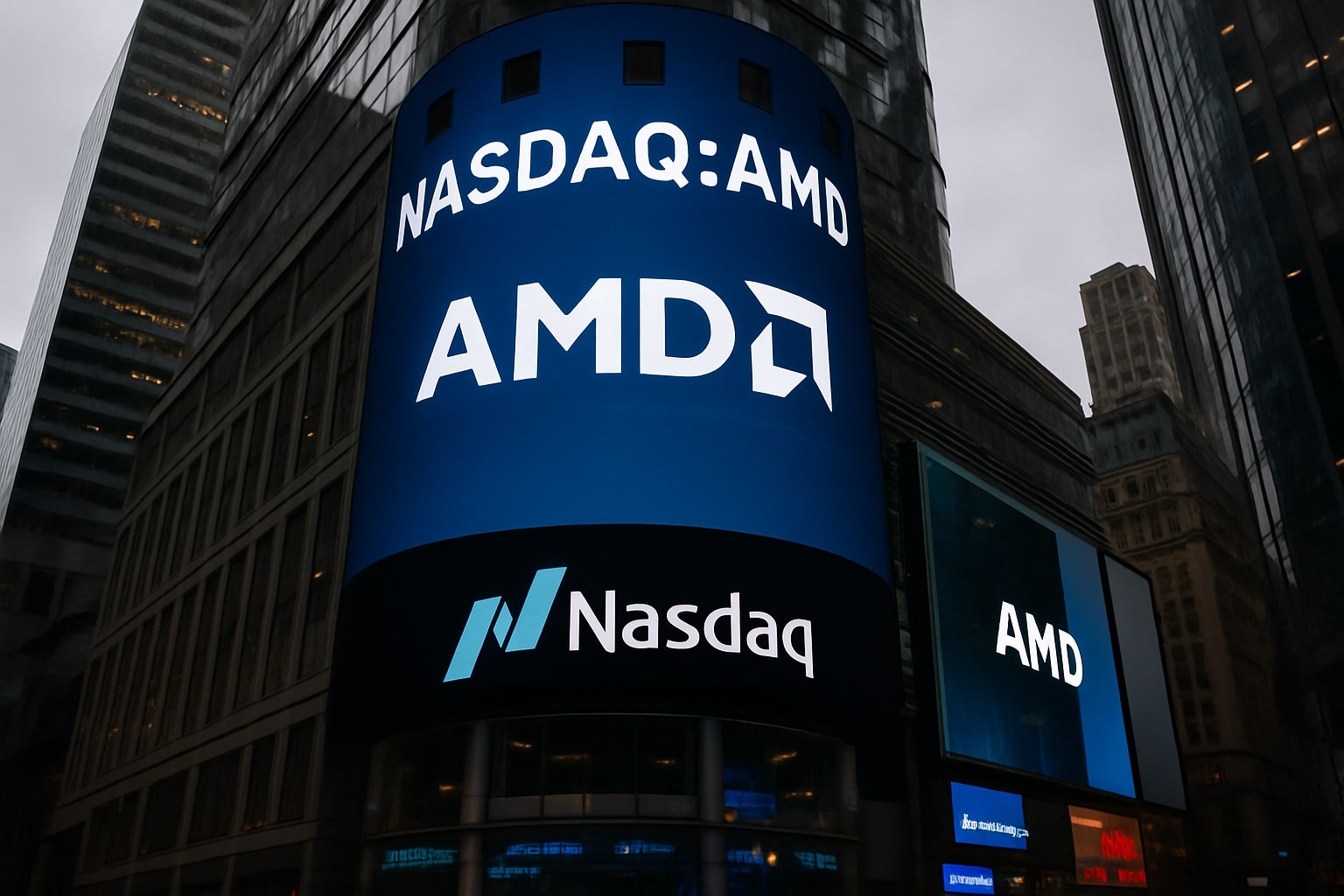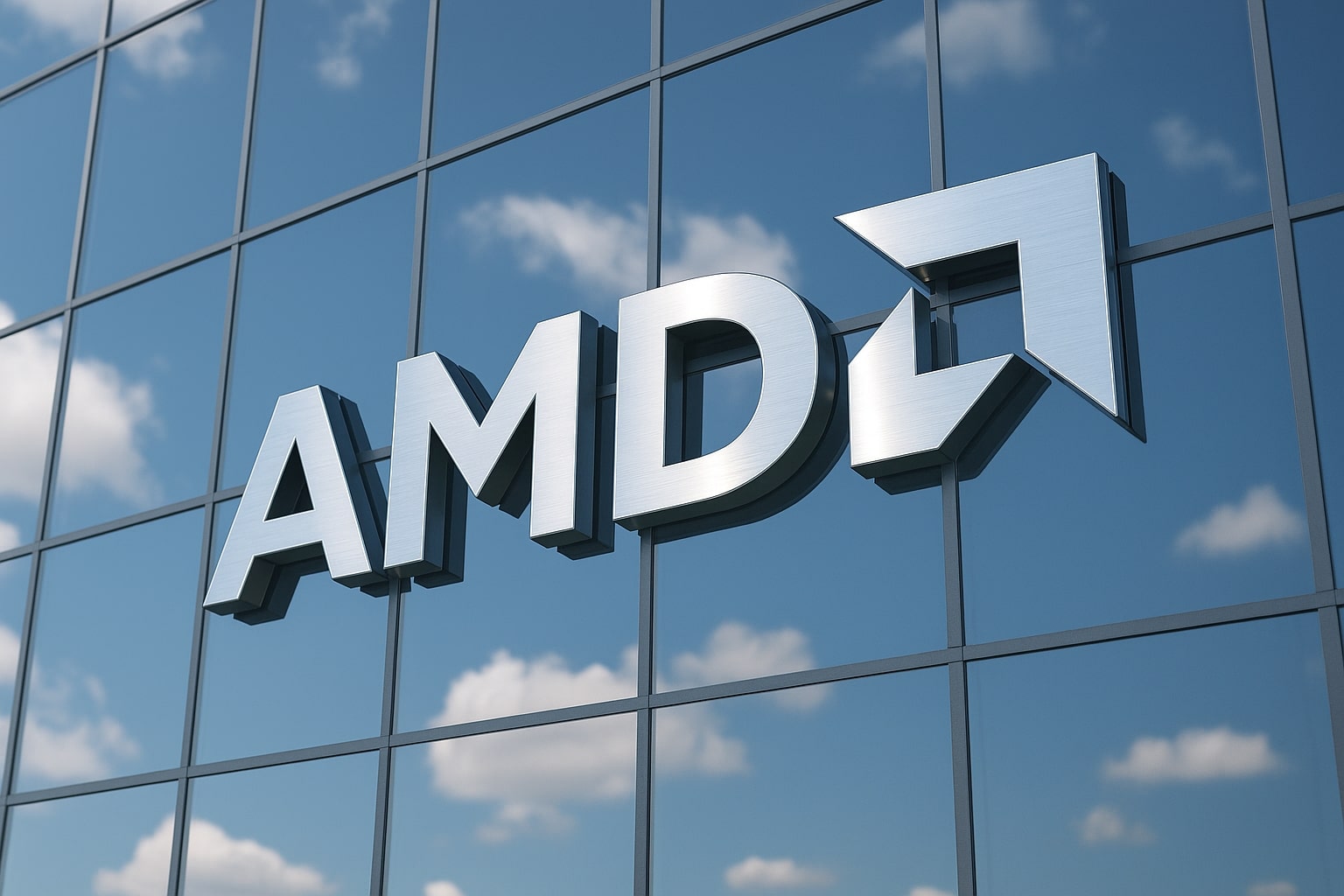
AMD Stock Price Eyes $223 (NASDAQ:AMD) Rides AI Surge, Gaming Rebound, and IBM Quantum Deal
AI accelerators, console partnerships, and quantum integration fuel AMD’s growth as revenue climbs 31.7% YoY and EPS projected to hit $6.02 in 2026 | That's TradingNEWS
Advanced Micro Devices (NASDAQ:AMD) Faces Pivotal AI and Quantum Growth Phase
NASDAQ:AMD Builds Momentum in AI Semiconductors
Advanced Micro Devices, Inc. (NASDAQ:AMD) has positioned itself at the center of the artificial intelligence race with its Instinct MI350 accelerators and EPYC Turin CPUs. Oracle’s commitment to a 27,000+ node AI cluster powered by AMD highlights how hyperscalers are diversifying away from sole reliance on NVIDIA. Performance benchmarks indicate MI355 delivers up to 40% more tokens per dollar compared with Nvidia’s Blackwell B200, giving AMD a tangible total cost of ownership advantage. With MI400 accelerators scheduled for 2026, AMD is preparing to capture additional market share in a $364 billion AI CapEx cycle expected this year. Even a 1% incremental gain could add 10% to revenue growth, showing the leverage embedded in its data center business.
AMD Gains Market Share in CPUs Amid Intel Weakness
In desktop CPUs, AMD has overtaken Intel for the first time since 2006, with client revenue surging 67% year-over-year. Laptop adoption continues to rise as Ryzen chips dominate new Copilot-powered devices optimized for local AI inferencing. In servers, EPYC Turin processors are now outpacing Intel’s Xeon line, providing a foothold in enterprise contracts that once favored Intel. AMD generated $3.2 billion in Q2 2025 from its data center division, still trailing Intel’s historical $7.3 billion peak, but closing the gap rapidly. This expansion aligns with a structural shift where enterprise customers are prioritizing efficiency-per-watt and cost-effective scaling—areas where AMD consistently leads.
NASDAQ:AMD Gaming Segment Recovery Gains Steam
AMD’s gaming revenue, after a severe 59% decline in 2024, rebounded 73% year-over-year in Q2 2025, climbing from $648 million to $1.12 billion. The Radeon RX 9060 XT series, praised for its performance-per-dollar value, has begun eating into NVIDIA’s gaming dominance. Demand outpaced supply in the most recent quarter, suggesting a stronger trajectory heading into Q3. Microsoft’s upcoming The Outer Worlds 2 and Call of Duty, along with Take-Two’s Mafia reboot, are among the titles expected to drive GPU upgrades. Console partnerships also remain a durable tailwind—AMD continues to power Microsoft’s Xbox and Sony’s PlayStation franchises, covering nearly 70% of the global console market. With console SoCs representing 20-22% of device costs, AMD could secure $3.5–4 billion annually from console chips alone through 2029.
Quantum Computing Catalyst with IBM Partnership
A critical long-term catalyst is AMD’s partnership with IBM to co-develop hybrid quantum-classical computing systems. AMD GPUs and FPGAs will be embedded in IBM’s quantum stack, targeting commercial viability in a projected $130 billion market. While immediate revenue impact is limited, integration of MI350 accelerators into IBM’s HQCC roadmap introduces AMD to enterprise customers exploring quantum workflows. This partnership mirrors Nvidia’s CUDA-Q alliances but leverages IBM’s open Qiskit framework, aligning with AMD’s ROCm open-source strategy. If successful, it expands AMD’s TAM beyond the current $500 billion AI accelerator forecast.
Financial Performance and Growth Outlook for AMD
In Q2 2025, AMD posted $7.69 billion in revenue, a 31.7% increase year-over-year, beating consensus by $255 million. Net income reached $872 million, recovering from a dip tied to R&D ramp-ups in 2024. With Q3 guidance at $8.7 billion (+28% YoY), momentum continues even without accounting for China-related AI chip sales under export review. Free cash flow stood at $1 billion in Q2, supported by $5.8 billion in cash reserves and $3.2 billion in long-term debt, much of it linked to the ZT Systems acquisition.
R&D spending grew 20% YoY, underscoring management’s commitment to next-generation chips. Analysts forecast FY2025 revenue of $33.0 billion, climbing to $40.1 billion in 2026, implying a 21.4% growth rate. EPS is projected to jump from $3.90 in 2025 to $6.02 in 2026, a 54% increase, giving AMD a forward P/E of ~27x—still discounted versus NVIDIA’s multiple. With a PEG ratio of 1.5, valuation suggests AMD could reasonably support a stock price above $223 by year-end, and as high as $291 by 2026.
Valuation, Risks, and Strategic Positioning of AMD
Despite a near 100% rally from April 2025 lows to $162.63, AMD trades at a discount relative to peers. Risks remain—export restrictions to China could cap MI308 shipments, and NVIDIA’s $46.7 billion quarterly revenue sets a formidable benchmark. Dependency on TSMC’s advanced nodes also introduces supply chain concentration risks. However, AMD’s open-source ROCm software stack provides a counter to Nvidia’s CUDA lock-in, offering 30% hardware cost savings for enterprises and driving adoption among SMEs scaling AI applications.
AMD’s strength lies in capturing demand from multiple growth engines: AI accelerators, data center CPUs, gaming GPUs, console SoCs, and now quantum integration. With revenue projected at $42.9 billion by 2026 and profitability expanding, the company appears positioned to deliver double-digit growth through the decade.
That''s TradingNEWS
Read More
-
AMD Stock Price Forecast - AMD Shares Gains on $9.2B Q3 Surge
27.11.2025 · TradingNEWS ArchiveStocks
-
XRP ETFs (NASDAQ:XRPI, NASDAQ:XRPR) Cross $644M AUM as XRP-USD Climbs to $2.18
27.11.2025 · TradingNEWS ArchiveCrypto
-
Natural Gas Price (NG=F) Rises Toward $4.60 as Cold Weather and Record LNG Exports
27.11.2025 · TradingNEWS ArchiveCommodities
-
Stock Market Today - Dow 47,427 and Nasdaq 23,214 — Fed Cut Bets Power DELL, HOOD, and URBN in Holiday Rally
27.11.2025 · TradingNEWS ArchiveMarkets
-
USD/JPY Price Forecast - (Dollar–Yen) Steadies at 156.30 as Japan’s ¥21.3 Trillion Stimulus
27.11.2025 · TradingNEWS ArchiveForex


















